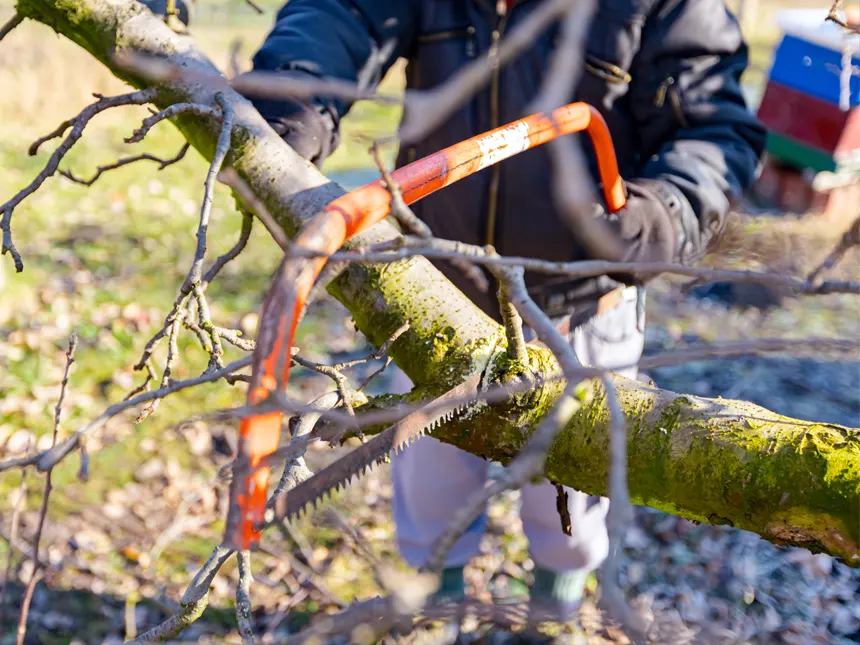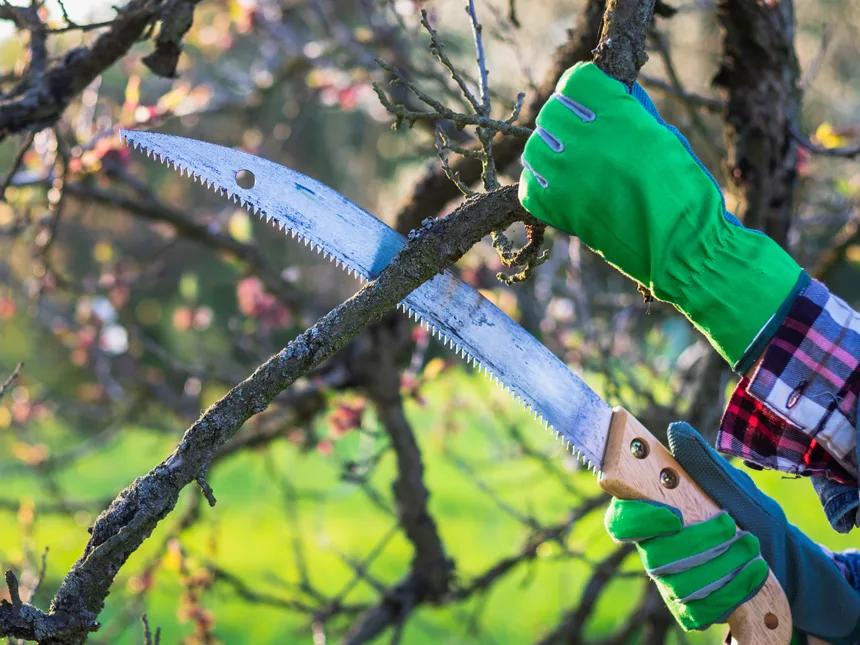The Main Types of Chainsaws (And A Few Variations)
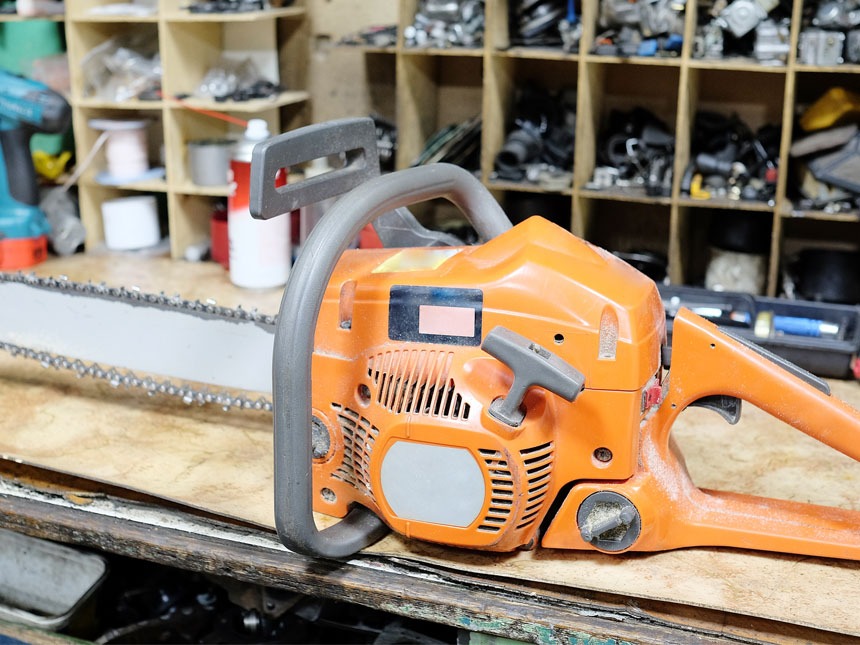
Timber Gadgets is reader-supported. We may earn a commission if you buy through the links on our site.
Chainsaws are versatile tools with various types to suit different needs. From powerful gas chainsaws to lighter electric and pole saws, each has its own benefits and unique features.
Corded electric chainsaws are limited in range, while cordless chainsaws offer portability and quiet operation. Choosing the right type of chainsaw based on the intended use and required features is essential for a successful task.
Table of Contents
Gas-Powered Chainsaw
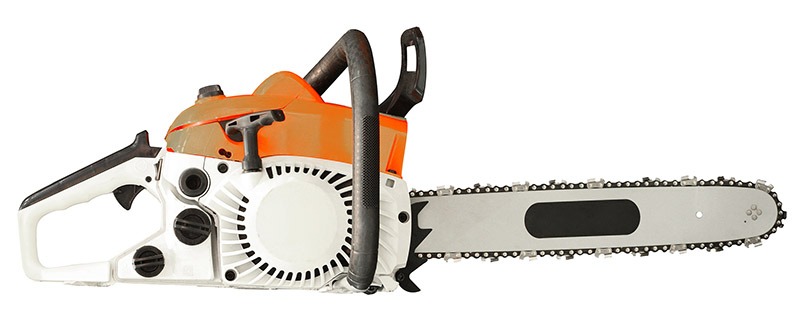
Gas chainsaws are powerful cutting tools used by both professionals and homeowners for their unmatched performance. With engine displacements ranging from 30cc to 120cc, gas chainsaws can easily cut through trees of any size. However, they emit fumes and can be noisy, requiring hearing protection.
Additionally, they require a mixture of gasoline and engine oil in a specific ratio.
Compared to electric or cordless models, gas chainsaws are more powerful and can handle heavy-duty cutting tasks. They are ideal for cutting large amounts of firewood and can work for extended periods without losing power.
However, they are also heavier, require more maintenance, and cost more than electric models. Gas chainsaws also generate more noise, with larger models producing up to 120 decibels of sound at the operator’s ear.
When purchasing a gas chainsaw, it is important to consider the intended use and frequency of use. For occasional use or light pruning, an electric or cordless model may suffice.
Related: Electric or Gas Chainsaw: Which is better?
However, for heavy-duty cutting tasks, a gas chainsaw is the ideal choice. Proper safety measures, such as wearing hearing protection and following manufacturer recommendations, should also be taken to ensure safe operation.
Electric-Powered Chainsaw
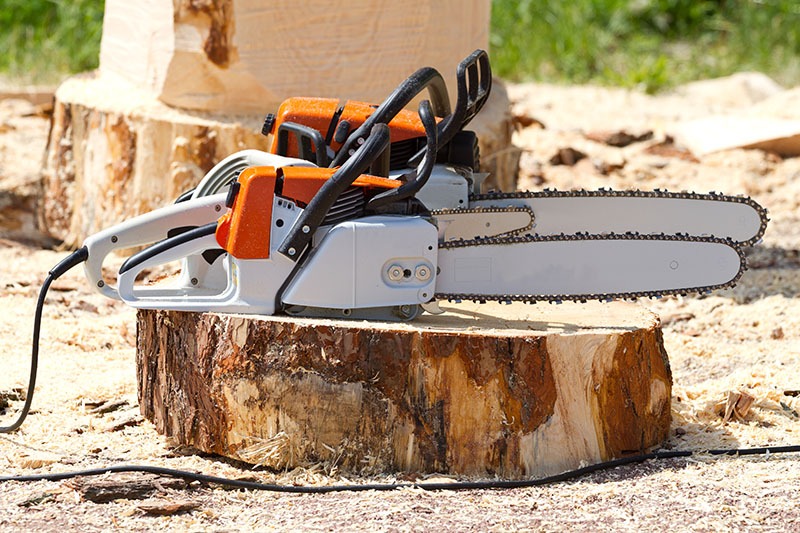
Electric chainsaws are a great option for homeowners who need a lighter and easier-to-maneuver tool for cutting 2 x 4 and small 8” logs in their backyard.
Unlike gas chainsaws, electric chainsaws require no refueling or maintenance, but you will need to manage a cord and make sure there is an outdoor power outlet within reach.
When choosing an electric chainsaw, consider the amperage of the motor, which indicates the chainsaw’s power. A higher amp rating means the motor draws more current and can spin faster or generate higher torque. However, amperage alone isn’t an indicator of cutting performance, and some manufacturers may exaggerate their chainsaw’s amperage.
Next, consider the bar length, which should be 12″ or 14″ for DIY work and 16″ for occasional firewood cutting. For light pruning and maintenance, a 10″ or even 8″ bar is sufficient.
When operating an electric chainsaw, make sure to use a heavy-duty extension cord, such as a 14-gauge (50 feet) or 12-gauge (100 feet) cord. Overall, an electric chainsaw is a great alternative to gas chainsaws for lighter cutting tasks.
Poll Saw
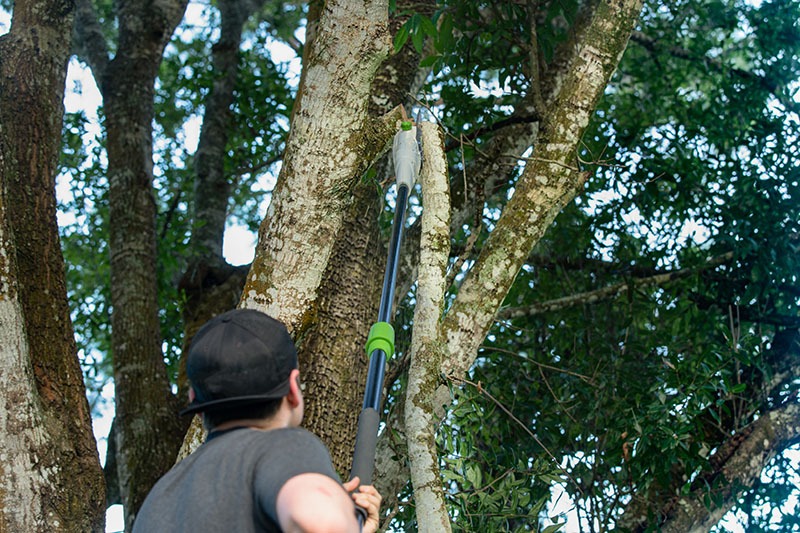
If you need to prune high branches on your trees but don’t want to climb a ladder with a chainsaw, a pole saw might be a good option.
These tools come in two types:
- pole-mounted chainsaws (gas or electric).
- saw mounted at the end of the pole (manual).
Pole saws allow you to reach branches that are 6-14 feet above your head, without having to use a ladder. However, it is important to handle them with care since they can cut through clothes and flesh despite their small size.
Related: Best Manual Pole Saws
Compared to other cutting tools, pole saws are safer for cutting high branches, as they don’t require a ladder. However, they may not be as powerful as a traditional chainsaw, and may be limited in their reach or cutting capacity.
It is important to choose a pole saw with the right specifications for your needs and to handle it with care.
Variations of Chainsaws
There are several types of chainsaws available in the market, each with its own unique features and benefits. Among these variations are corded and cordless electric chainsaws, as well as top-handle and rear-handle chainsaws.
These differences cater to specific needs and preferences, making it important to understand the distinctions between them before making a purchase decision.
Top Handle vs Rear Handle
If you are looking for a lightweight and compact chainsaw for your DIY projects, firewood cutting, or professional arborist tasks, then you might want to consider a top-handle chainsaw.
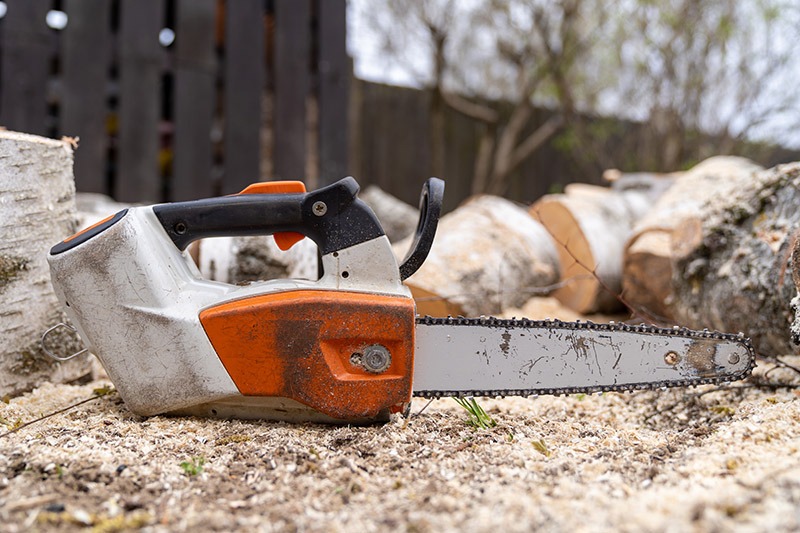

These chainsaws are designed to be easy to maneuver, with a weight balance around the handle that reduces wrist strain during use. They typically feature a 14 to 18-inch bar and 40 to 55-cc engines, making them perfect for limbing operations at extreme heights.
If you’re an arborist or tree climber, a top-handle chainsaw is a great choice due to its compact and lightweight design, making it easy to maneuver while working at extreme heights.
One advantage of this type of chainsaw is the lanyard loop on the back, which allows you to securely attach it to your harness or belt while working inside a tree or bucket.
In contrast, rear-handle chainsaws offer a firmer grip and longer reach, which makes them better suited for felling trees and cutting large logs.
Cord vs Cordless (Electric Chainsaws)
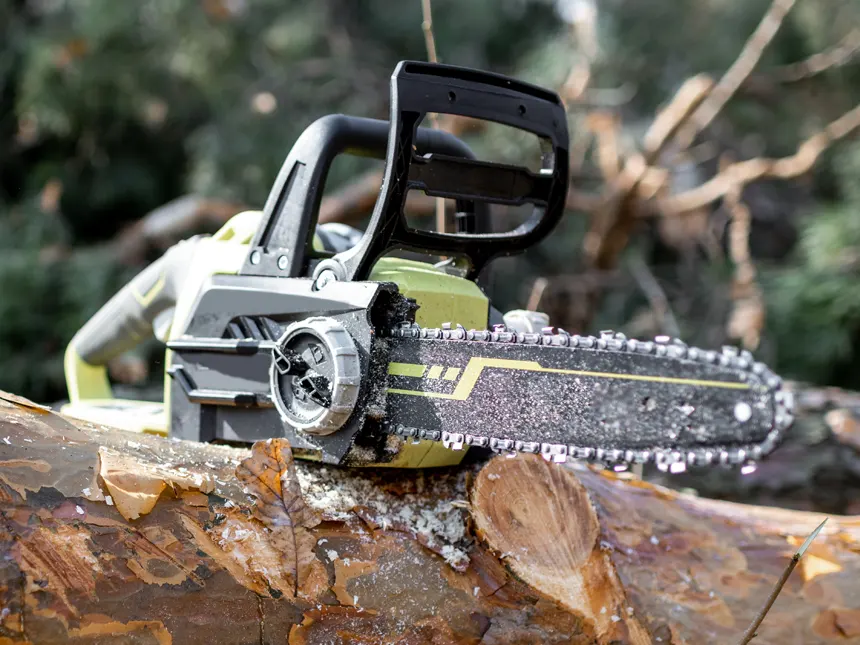
Corded electric chainsaws have limited working range due to being tethered to an outlet, making them ineffective for tasks outside the home. Cordless chainsaws, powered by onboard lithium-ion batteries, provide portability and quiet operation, while newer models can match or outperform small gas chainsaws.
Makita and DeWalt are the leading brands in cordless chainsaws, offering interchangeable lithium-ion battery platforms for their cordless tools.
Cordless chainsaws typically use low-profile chains with anti-kickback design, and newer models can give around 60-70 cuts on a single charge, sufficient for felling and limbing small to medium-sized trees. However, they may lose power as the battery level drops below 20-30%.
To ensure efficient battery use, pay attention to the Ampere hour (Ah) rating when buying a cordless chainsaw. A higher Ah rating means more energy can be drawn from the battery within the same time period, even if a lower voltage model.
Summary: Type of Chainsaws
There are various types of chainsaws available in the market, and each has its own unique features and benefits that cater to specific needs and preferences.
- Gas-powered chainsaws are ideal for heavy-duty cutting tasks and can easily cut through trees of any size, but emit fumes and can be noisy.
- Electric chainsaws are lighter and require less maintenance, making them ideal for light pruning and maintenance work.
- Pole saws are a safer option for cutting high branches and can be either pole-mounted or powerhead and bar mounted.
Top-handle chainsaws are lightweight and compact, making them ideal for professional arborists and tree climbers for limbing operations at extreme heights, while rear-handle chainsaws offer a firmer grip and longer reach for felling trees and cutting large logs.
Lastly, cordless chainsaws provide portability and quiet operation, while newer models can match or outperform small gas chainsaws. It is essential to consider the intended use and specific features that best suit the task at hand when choosing a chainsaw.

